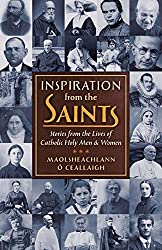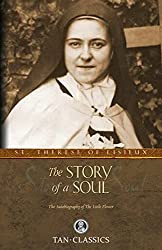
O St. John-Marie-Baptiste Vianney!
Who, what were you?!
If I think back to my New Age days, I can still imagine answering such a question with words like: “Vast, cosmic, superhuman …”
For words like “holy” or “saint” were not very much used in the New Age.
But of course, back in my New Age days, we never heard much of Catholic matters. Such were – for instance – hardly if ever to be found in a New Age bookshop.
Even if, in a well-stocked New Age bookshop, one may find material about all manner of exotic personages, Indian saints, gurus, avatars, Atlantean warlords, extraterrestrials even …
But Catholic saints? Forget it!
And hence however astonishing the story of the Holy priest of Ars may be, however much it testifies to profound spiritual Mystery, you are unlikely to find it in shops, which purport nevertheless to represent the world’s great spiritual traditions.
Yes, on these so-called “inclusive, universal and holistic” bookshelves, you are unlikely to find the story of a humble Nineteenth Century French priest who exorcises demons, is regularly assaulted by the devil, who heals the blind and the lame, and who in fact generated so much attention, that back in the middle of the Nineteenth Century, four hundred people a day came from all corners of France to descend on his tiny French village and witness the miraculous …
Still, if New Agers like I once was myself, were to hear the truth of St. John Marie Vianney, they just might be interested to read such a book as this.
But the barriers are just too great. The New Age landscape is littered with too many obstacles to the Catholic Faith. (Deliberately littered I would now say …).
And one can spend one’s entire life in New Age circles, without hearing once of the Curé d’Ars – the Patron Saint of all Parish priests.

But it happened in my own case that I came upon Meditations on the Tarot—which book, despite its name, has nothing to do with Tarot card divination and which book led directly to my conversion to Catholicism.
And only in this book did I begin to hear mention of the Curé d’Ars.
Now the author – Valentin Tomberg – spoke of the Curé d’Ars in terms of sacred magic, a term which might – for good reason! – trouble many Catholics. But what Tomberg meant by sacred magic has nothing whatsoever to do with aspiring for occult power, but is all about obedience to God and the Church:
Sacred magic is the power of love, born of the union in love of divine will and human will …
The priesthood includes numerous thaumaturgists —St. Gregory, St. Nicholas and St. Patrick — which is sufficient to convince us that sacred magic is truly amongst the works of the priesthood.
How could it be otherwise, given that the administration of the sacraments —these universal operations of sacred magic — constitute the principal responsibility of the clergy and that the individual operations “decided above” are entrusted above all to those living in the atmosphere of the universal sacraments?
Is it not natural that he who participates each day in the mystery of the transubstantiation is called, in the first place, to sacred magic [Emphasis mine]?
The life and work of the holy priest of Ars leaves no doubt that the response is affirmative …
Anonymous (Valentin Tomberg) Meditations on the Tarot, p 57.
Years later, whilst living in the ruins of Catholic France, I would go to Ars on pilgrimmage.

Now, I had been a New Ager who had read of and even visited numerous places that New Agers call “Power Centres” …
No one ever told me of Ars or Paray-le-Monial in France – but how far more powerful I have found these than any New Age centres!

Still, most of us will not have the grace that I have had of visiting such long forgotten outposts of Catholic France.
But books like this – from little known traditional Catholic publishers (the glorious TAN in this case – a source of much consolation to me) can do much to redress the sad situation of the cultural invisibility of the saints.
It should also be noted that this is the definitive biography of the Curé d’Ars, based on the official “Process of Beatification and Canonization,” and hence extremely well-documented.
Here is an entry-portal into a different universe, dear Anglophone reader. Here we have a translation of a Nineteenth Century text by a French priest that has served to take me into a world which astonishes …
(May I say I have very similar feelings about another volume from the same epoch and culture The Life of St. Margaret Mary Alacoque? Indeed I have even deeper joy in this volume and it is reviewed here.)
Yes here is a book that can open out a lost universe. It starts with the childhood of the Saint, in a bucolic setting filled with piety. Then comes the terror of the French Revolution.
Personally, I found the opening part of the volume a little slow. Still the beginning of the book is rich indeed in evoking the world of Catholic France that the Revolution tried to obliterate.
However, the book enters a very different tempo, when we reach the point where Jean-Marie Vianney arrives in the tiny French village to do the work of a PRIEST. Then the power of the book began to build and build, as I read avidly, fascinated and astonished …
Not long after I wrote the last words, I unexpectedly discovered this testimony by Bl. John Paul II to Father Trochu’s book:
In the span of nearly 50 years of priesthood, what is still the most important and most sacred moment for me is the celebration of the Eucharist. My awareness of celebrating in persona Christi at the altar prevails. Never in the course of these years have I failed to celebrate the Most Holy Sacrifice. If this has occurred, it has been due entirely to reasons independent of my will.
Holy Mass is the absolute center of my life and of every day of my life.
It is at the heart of the theology of the priesthood, a theology I learned not so much from text books as from living examples of holy priests. First and foremost, from the holy Cure of Ars, Jean Marie Vianney [Emphasis mine].
Still today I remember his biography written by Father Trochu, which literally overwhelmed me.
Finally, this book is out of copyright. As I am at liberty to reproduce extracts, I have done so. These extracts may be found below.
I hope they will not only give a flavour of this remarkable book, but serve as a little drop in the bucket to help to make this Saint more well known …
Extracts from the Book
Taken from various parts of the text and regrouped under themes:
On the Tears of the Curé d’Ars
Other supernatural favors also – such as are met with in the lives of the greatest mystics – fell to the lot of the Curé d’Ars. Thus he received in a plentiful measure the gift of tears.
According to St. Teresa, these tears spring from a sentiment of ineffable tenderness towards God, or from the interior martyrdom endured by the soul when it sees God being offended. “Those tears are caused by God and shed in ecstasy,” Lacordaire writes.
M. Vianney could never speak of sin and sinners without shedding tears.
He sobbed all the time he was making the Stations of the Cross. When he distributed Holy Communion, tears would often trickle down upon his chasuble.
In the last years of his life in particular, he could never preach about the Eucharist, the goodness and love of God, the happiness of heaven – those were his favorite topics – without being stopped by his tears.
In addition to words, there was about M. Vianney something even more irresistible – namely his tears. To soften a hardened heart, it was enough for him at times to point to the Crucifix that hung on the wall.
“Why do you weep so much, Father?” the Saint was asked by a sinner weeping by his side:
“Ah My friend, I weep because you do not weep enough.”

The Curé d’Ars Heals the Blind, the Deaf, the Lame
Mlle. Claudine Venet, of Viregneux, a small village of the canton of Saint-Galmier, in the Loire, was taken to Ars on February 1, 1850. In consequence of an attack of brain fever, she had become completely deaf and blind.
M. Vianney had never seen her; no one had introduced her to him. On that February 1, she happened to be standing outside the church as he went by. Without speaking a word, he took her hand, led her into the sacristy and made her kneel down in the confessional.
He had hardly given her his blessing when her sight and hearing returned. It seemed to her that she had awakened from a long dream.
After her confession, the servant of God made the following amazing prophecy: “Your eyes are healed, but you will become deaf for another twelve years. It is God’s will that it should be so!”
On leaving the sacristy, Claudine Venet felt her ears closing once more. As a matter of fact, she could no longer hear anything. The infirmity lasted twelve years as foretold on this February 1, 1850.
Calm and resigned, enjoying the sight that had been restored to her, the stricken woman awaited the day of her deliverance. Great was her emotion when, on January 18, 1862, she felt perfectly cured.
In 1854, a girl of Montchanin (Saone-et-Loire) of the name of Farnier, came to Ars to beg from M. Vianney the cure of her paralyzed leg.
“My child,” the saint told her, “you disobey your mother far too often, and answer her back in a disrespectful manner. If you wish the good God to cure you, you must correct that ugly defect. Oh! what a task lies before you! But remember one thing: you will indeed get well, but by degrees, according as you try to correct that defect.”
As soon as Mlle. Farnier returned home she endeavored to show more obedience and respect to her mother. Her crippled leg, which had been four inches shorter than the other, insensibly grew longer, and at the end of a few years her infirmity had wholly vanished.
His cousin, Marguerite Humbert, came one day to beg his prayers for one of her little daughters who was dangerously ill. “She is ripe for heaven,” he said without hesitation. “As for you, my cousin, you need crosses to make you think of God.”
Françoise Lebeau, a poor girl of Saint-Martin-de-Commune in the Saoneet-Loire, had become quite blind. She went with her mother on a pilgrimage to Ars. They begged their bread the whole way and slept in stables or sheds.
To this poor girl M. Vianney did not fear to disclose something of the divine mystery of suffering, for his inspired gaze had fathomed her valiant spirit.
“My child,” he said, “you can be cured, but if the good God restores your sight, your salvation will be less assured; if, on the contrary, you consent to keep your infirmity, you will go to heaven, and I even guarantee that you will have a high place there.”
The blind girl understood; she no longer asked for a cure and left Ars in a state of perfect resignation to God’s will.
Even in the purely material order Ars appeared to be under a special protection. “I have heard my mother say,” Madeleine Mandy-Scripiot relates, “that since 1825, the year she came to live in the parish, until the death of M. Vianney, there never was a hailstorm.
She ascribed this protection to the merits of the servant of God, the more so as he himself was in the habit of asking for prayers that we might be spared the scourge.”“It has been remarked, “ Mlle. Marthe des Garets adds, “that during the whole time of his ministry at Ars (41 years) no damage was ever done by storms.”

On the Transformation of the Village of Ars
In his assignment as parish priest of Ars, St. John achieved something which many priests would like to have done, but which is scarcely granted to any.
Not over night, but little by little, the tiny hamlet underwent a change. The people of Ars were unable to remain aloof for long from the grace which radiated from the remarkable personality of their priest. When a man attacks inveterate disorders and popular vices, he challenges opposition.
St. John was not unprepared – he knew the enemy would raise his head. “If a priest is determined not to lose his soul,” he exclaimed, “so soon as any disorder arises in the parish, he must trample underfoot all human considerations as well as the fear of the contempt and hatred of his people.
It took St. John Vianney ten whole years to renew Ars, but the community changed so noticeably and to such an extent that it was observed even by outsiders. There was no more working on Sundays, the church was filled more and more every year, and drunkenness fell off.
In the end the taverns had to close their doors since they had no more customers; and even domestic squabbles abated. Honesty became the principal characteristic.
“Ars is no longer Ars,” as St. John Vianney himself wrote; for it had undergone a fundamental change. Under his guidance the little village became a community of pious people, to whom all his labors were directed.
He delighted in teaching the children their catechism and he did this daily. After a while the grown-ups came too and he found that those who were children during the Revolution were in complete ignorance of their religious duties. He taught the people love for the rosary and wanted everyone to carry one around at all times.
It is truly astounding to reflect upon what St. John Vianney, with a staff of trained assistants, was able to achieve in the village in the space of a few years. What an immense amount of endeavor underlay his work will best be appreciated by anyone who has had to convert only a few drunkards to sanity.
The explanation of this mysterious transformation of the village of Ars can only be grasped in the remarkable manner that this simple priest realized that a man must always begin with himself, and that even the rebirth of a community can only be achieved by its renewing itself. We must expect nothing of men which is not already embodied within them.
On the basis of this perception St. John Vianney set to work, in the first place, upon himself, so that he could attain the ideal which he demanded of his parishioners in his own person.
He took his own religious obligations with the greatest seriousness, and did not care whether the people noticed this or not. And finally the inhabitants of Ars said to each other: “Our priest always does what he says himself; he practices what he preaches. Never have we seen him allow himself any form of relaxation.”
The conversion of the whole parish was too unusual an occurrence for it to remain unknown. From the year 1827, there began the famous stream of pilgrims to Ars. People went to Ars from all parts of France, from Belgium, from England and even from America.

The Curé d’Ars in the Confessional: ‘Beseiged Day and Night’
The principal motive which led all these crowds of pilgrims to the priest of Ars was purely the desire for him to hear their confession and to receive spiritual counsel from him. They were driven to his thronged confessional by the longing to meet once and for all the priest who knew all about the reality of the soul.
The priest of Ars possessed the ability to see the human soul in its nakedness, freed of its body. This grace is only rarely bestowed on men. He never put his nose into the spiritual affairs of other people. He was entirely free from inquisitiveness. Like St. Francis de Sales, he had the gift of “seeing everything and not looking at anyone.”
In confessing people this holy man, who had a fundamental knowledge of sin, strove after one thing only – to save souls. This was his ardent desire, and for the sake of it he suffered all the tortures of his daylong confinement in the confessional.
This great saint heard confessions from 13 to 17 hours a day, and could tell a penitent’s sins even when they were withheld. In order to save souls one must be possessed of that holy love of men which consumed the priest of Ars.
“The great miracle of the Curé d’Ars,” someone has said, “was his confessional, besieged day and night.”
One day, under the pretext of sending him on an errand, the Baronne de Belvey dispatched to M. Vianney a hardened sinner, who only set foot in the church at Christmas and Easter. It would seem that he had not been to confession since his first Communion.
“How long is it since you were last at Confession?”, M. le Curé asked. “Oh, forty years.” “Forty-four,” the saint replied.
The man took a pencil and made a hasty calculation on the plastering of the wall. “Yes, it is quite true,” he admitted, overcome with amazement. The sinner was converted and died a good death.
St. John Vianney possessed the gift of being able to understand the soul of a man in an instant, and, without any lengthy explanations, to feel at once what spiritual trouble was afflicting it.
He had a clear sighted vision which often enabled him to foretell to a man what would happen to him in the future. This gift of God overpowered the people who visited his confessional, and to whom he granted a word of pardon. The words and advice of the Curé were like darts; they penetrated deeply. He said little, but his little was enough.

On the Love for Mary of the The Curé d’Ars
St. John Vianney had loved Mary from the cradle. As a priest he had exerted all his energy in spreading her glory. To convince themselves of it, the pilgrims had but to look at the small statues of her that adorned the front of every house in the village.
In each home there was also a colored picture of the Mother of God, presented and signed by M. le Curé.
In 1814 he had erected a large statue of Mary Immaculate on the pediment of his church. Eight years earlier, on May 1, 1836, he had dedicated his parish to Mary Conceived Without Sin.
The picture which perpetuates this consecration, says Catherine Lassagne, is placed at the entrance to our Lady’s Chapel. Shortly afterwards he ordered a heart to be made, in vermeil (color), which is, even to this day, suspended from the neck of the miraculous Virgin. This heart contains the names of all the parishioners of Ars, written on a white silk ribbon.
On the feasts of Our Lady, Communions were numerous, and the church was never empty. On the evenings of those festivals the nave and the side chapels could barely contain the congregation, for no one wished to miss M. Vianney’s homily in honor of Our Blessed Lady. The hearers were enthralled by the enthusiasm with which he spoke of the holiness, the power, and the love of the Mother of God.
Foreword for Monarchy by Roger Buck
On the Sanctity of the Curé d’Ars
Miracles are signs of divine approval, though sanctity may exist without them. Had he wrought not a single miracle, the Curé d’Ars would yet call for our admiration. His life was in itself a daily prodigy. …
His neighbor of Fareins, the Abbé Dubouis, declares that “without supernatural assistance M. Vianney would have sunk under the crushing weight of his work.”
“It is humanly inconceivable that, for the space of thirty years, he should have been equal to a task under the weight of which any other priest, however strong he might have been, would have quickly succumbed,” says Canon Gardette.
“He was visibly helped by God,” is the attestation of Père Faivre.
In conclusion we quote the opinion of one of the physicians who attended the holy Curé: “Knowing, as I do, his mode of life, I look upon his existence as extraordinary and beyond the range of a natural explanation,” was the verdict of Doctor Michel, of Coligny. Hence we may conclude in the words of Paul Bourget: “No, the era of miracles is not over, but to produce them saints are required – and they are too few.”
In the Process of his canonization, Mgr. Mermod, who was Curé of Gex at the time, relates the following incident: “An incorrigible drunkard of Chaleins, my former parish, was converted by M. Vianney.
During the three years that he lived afterwards that man never drank a drop of wine, and led an exemplary life. Now a striking thing happened. One day the good man called at the priest’s residence; he was quite well, yet he wished to go to confession, giving as his reason that he was going to die. As he persisted in his request, I gave him absolution and Holy Communion. An hour later he was dead.”
Jean-Marie sanctified himself whilst at work in the field or in the house. The supernatural world was ever present to him, but for all that he was neither a slacker nor a dreamer, his being a healthy and active temperament. “O what a beautiful thing it is to do all things in union with the good God!” he would say. … Oh! What a beautiful thing it is to offer oneself, each morning, as a victim to God!”
On Aug. 4, 1859, Fr. John Vianney gave up his soul to God. He had been parish priest of Ars for 41 years. In 1925, he received the highest honor of the Church by being canonized and placed in the index of the Saints.
Today over 500,000 people visit every year this simple farming town where they come to see the incorrupt body of one of the greatest saints in the history of the Church. The life of St. John Vianney is the story of a humble and holy man who barely succeeded in becoming a priest, but who converted thousands of sinners.
Foreword for Monarchy by Roger Buck
Buying Books at Amazon Through These Links Gives Us a Commission. This Supports Our Apostolate. Thank You if You Can Help Us Like This!













Comments
comments are currently closed
One response to “The Curé d’Ars by François Trochu (Review – with Extracts from the Book)”
[…] and not without parallels to the story of Saint Padre Pio a century later. More about this holy man may be found at this page of our website – which contains not only a review of his biography – but also some notable extracts […]
[…] relic of the heart of Saint John-Marie Vianney – whose Feast it is today – came to the Metropolitan Cathedral of Liverpool in the city […]
[…] Wednesday was the Feast of Saint John Marie Baptiste Vianney, the Curé d’Ars, who is known so well for having transformed the small French town of Ars into a hive of faith and […]
[…] a long and detailed biography of St. John-Marie Vianney, entitled The Curé d’Ars (reviewed here at this site) by the Abbé François Trochu, we find moving passages written about the transformation of Ars. Of […]